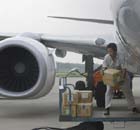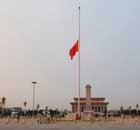Rescue & Aid
Authorities use Internet to smooth disaster relief
(China Daily)
Updated: 2010-04-22 08:14
 |
Large Medium Small |
BEIJING -- Since the 7.1 magnitude earthquake struck Qinghai province last Wednesday, a small group of officials at the China Earthquake Administration in Beijing have been busy on their computers.
| ||||
The first entry was published on the micro-blog at 8:46 am last Wednesday, less than an hour after the tremor in the Tibetan autonomous prefecture of Yushu, and more than 300 entries have followed.
Members of the public have posted comments and questions for administration officials, who have admitted that identifying the dead and missing has been difficult as the authorities had few records of a large migrant population.
The public has tracked the progress in rescuing the trapped and treatment of the survivors, as well as the latest situation in Yushu, on the official websites of government departments, blogs and micro-blogs of journalists.
The Qinghai provincial government has joined with the popular online networking site Tianya to publicize the most urgent needs in the quake zone. Netizens can donate on the website, which is organizing transport of relief materials to the disaster area.
The rescue headquarters and government ministries have updated information through various channels, including press conferences broadcast live online and on TV.
The flow of information is a two-way dialogue that benefits the authorities and the public, said Mao Shoulong, a public policy professor at Beijing's Renmin University.
"People share information online and the government benefits from the sharing. That's part of the reason why the rescue and relief work is going so smoothly," he said.
Mao cites as an example the prompt official response to people who wanted to go to the site immediately after the quake, so they could help with the rescue effort.
The Qinghai quake relief headquarters issued a notice on the day after the quake, warning people of the high-altitude environment, freezing weather and rough landscape, and urging them not to come to the quake zone in large numbers.
"We should think about doing something to help the quake survivors in the long term, for instance, help them rebuild their homes," said a posting from "Whu snowwolf" after the notice was published.
Authorities used to be guarded about sharing information with the public, fearing possible unrest, but recent experiences, such as the Sichuan earthquake in 2008, have shown the importance and benefits of transparency, Mao said.
At a meeting of the country's top leadership chaired by Chinese President Hu Jintao on Saturday, transparency was stressed in the quake relief.
Information about the situation of the quake and the relief work should be released in a "timely, accurate, comprehensive and objective manner", said a statement released after the meeting.
Wang Yukai, a professor at the Chinese Academy of Governance, agrees the government has improved public relations.
Xinhua











